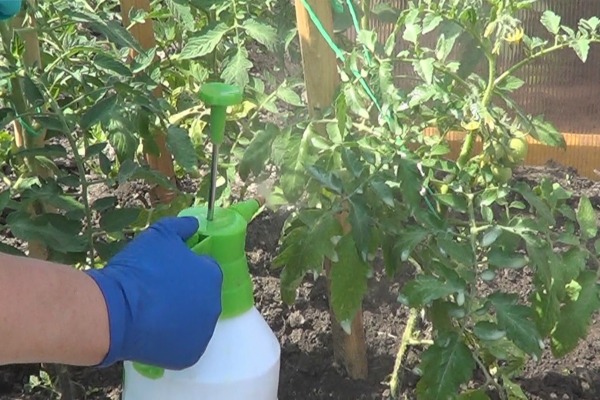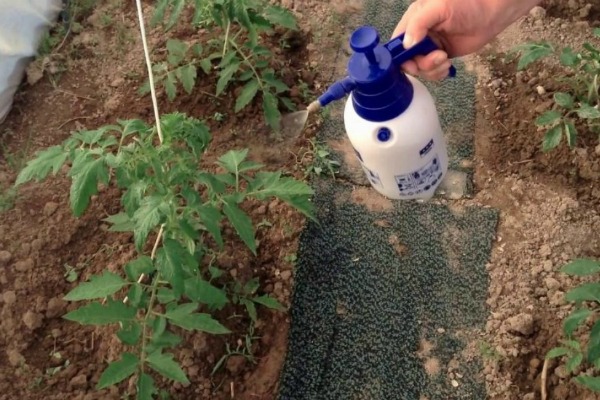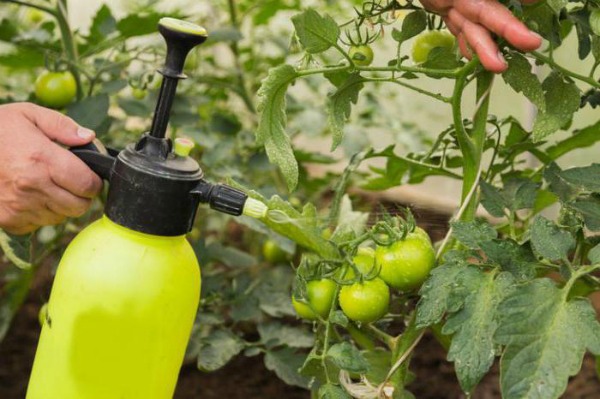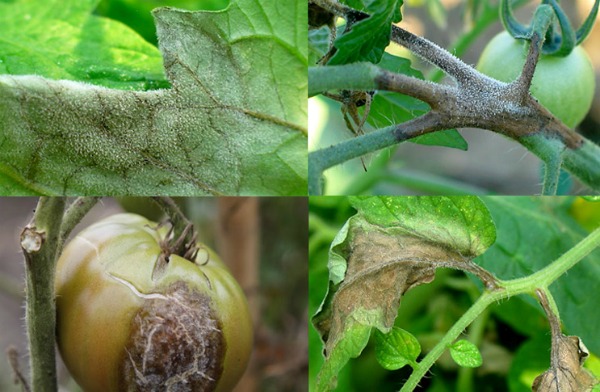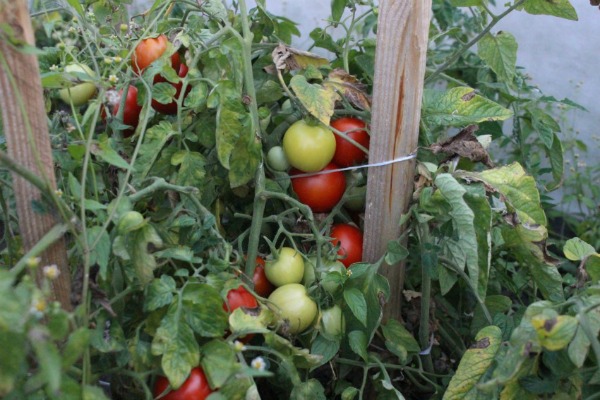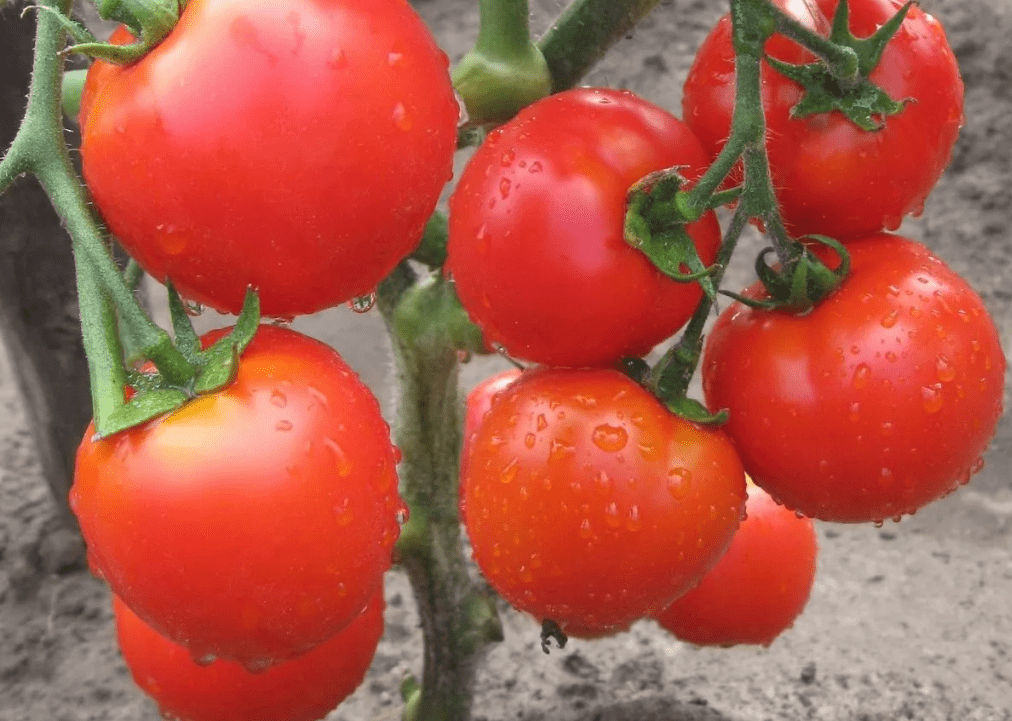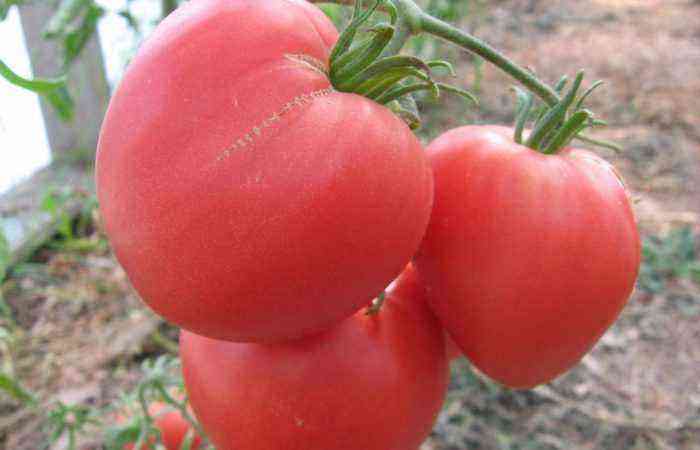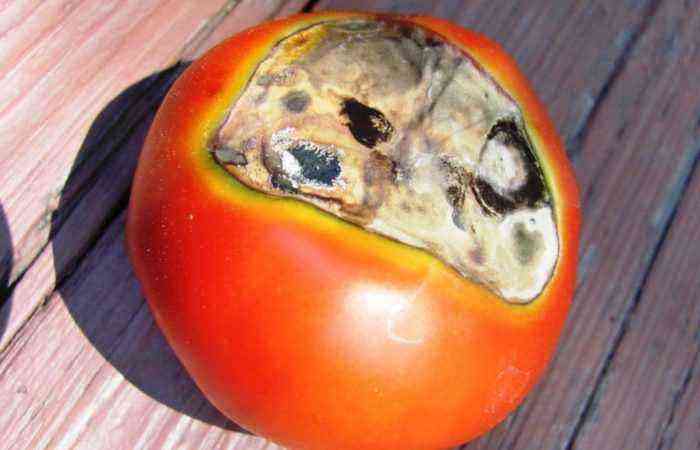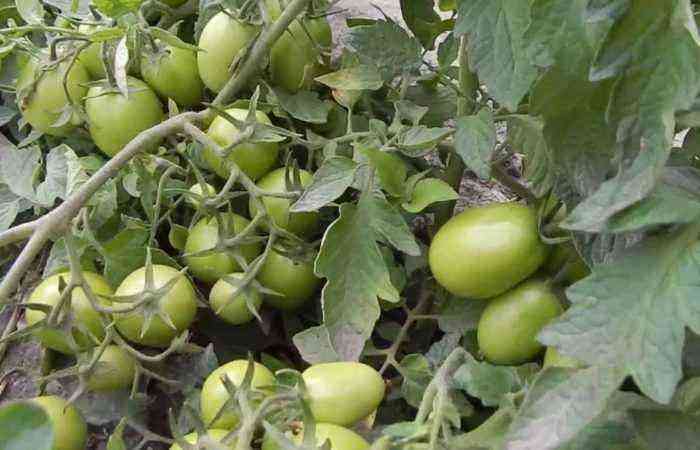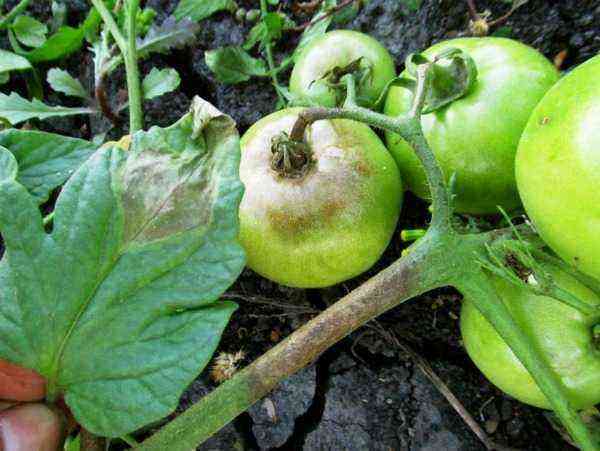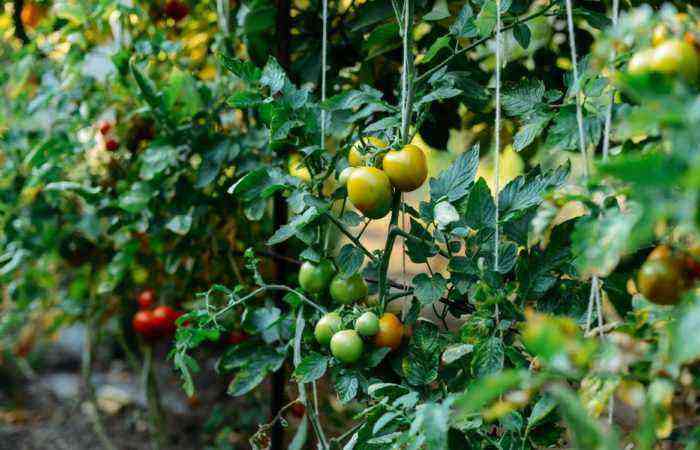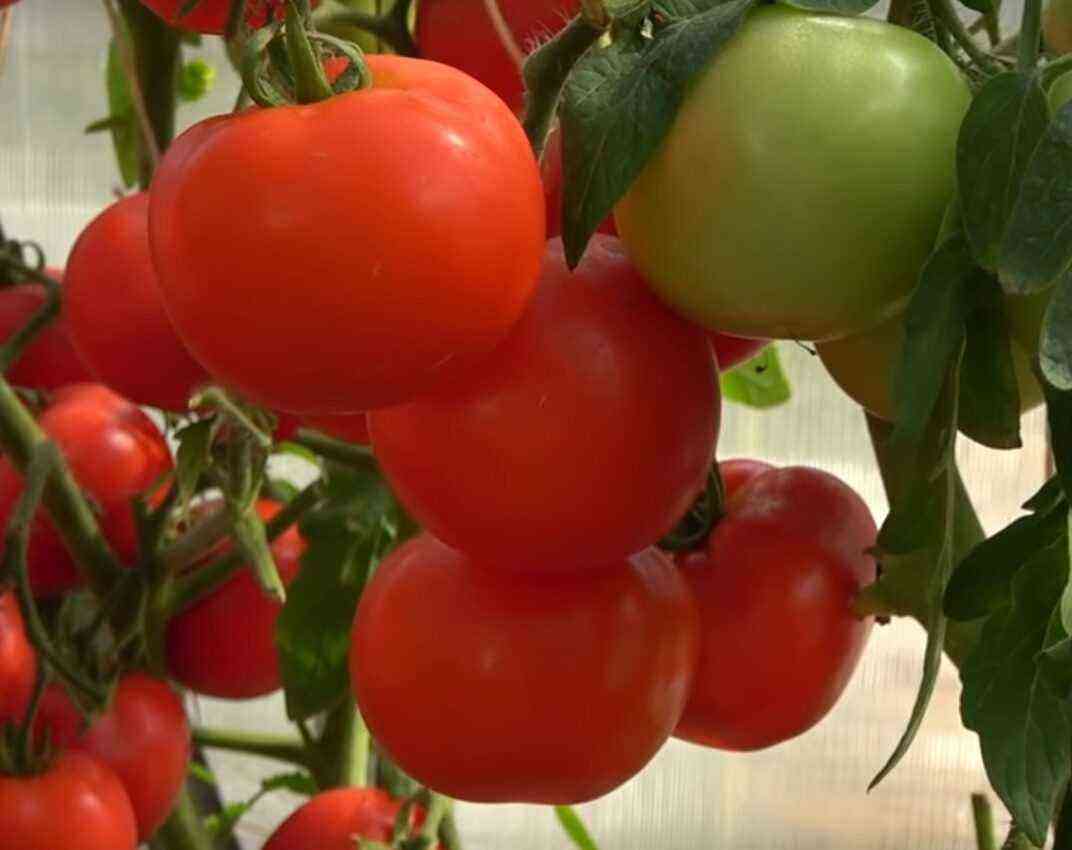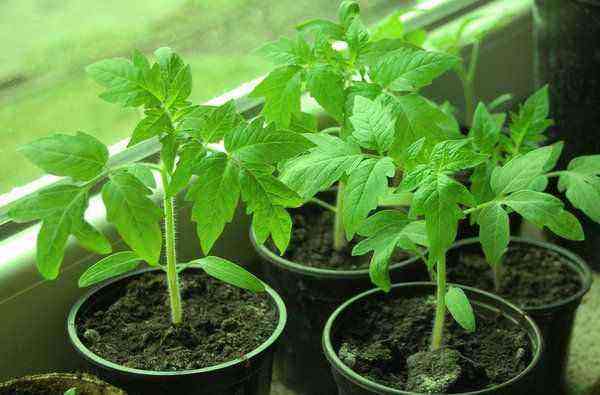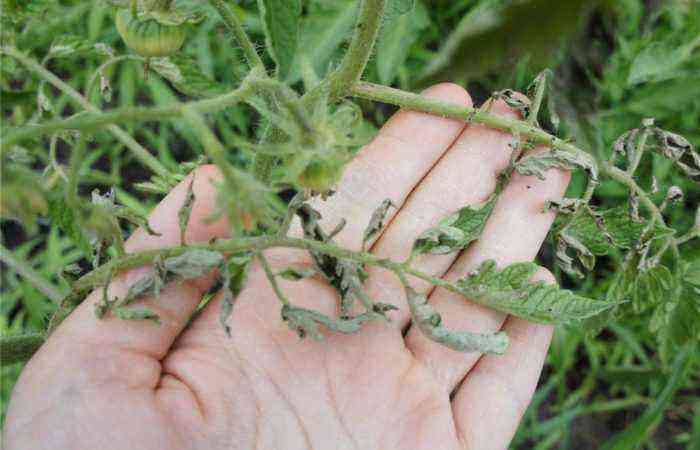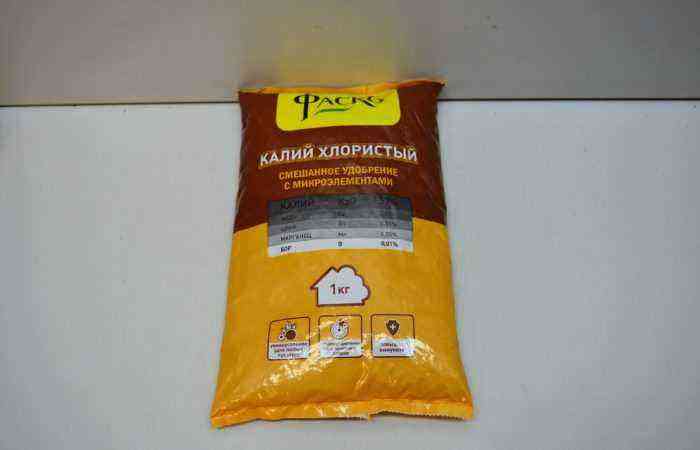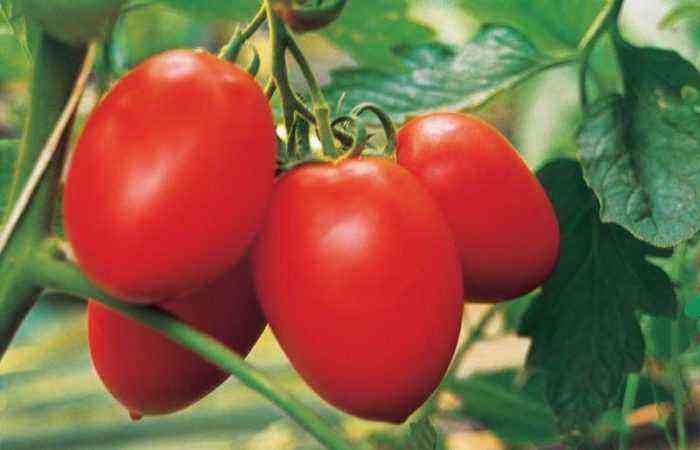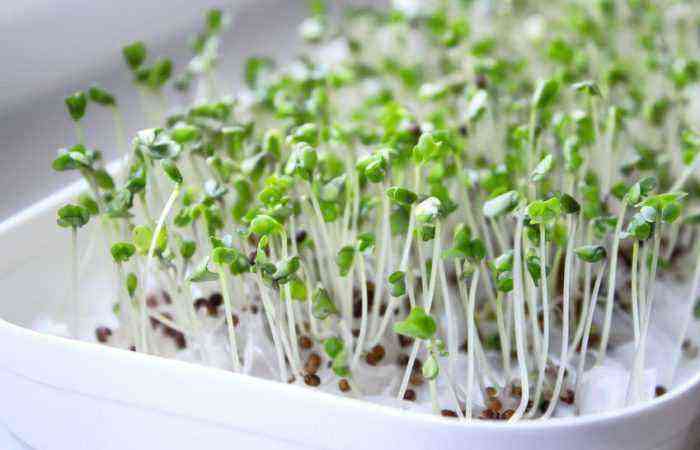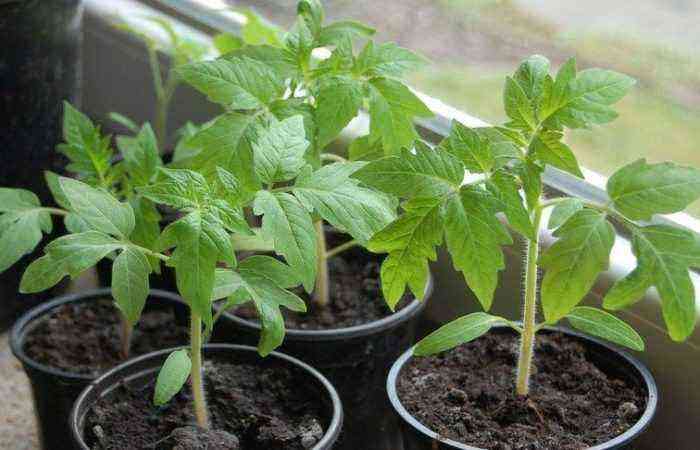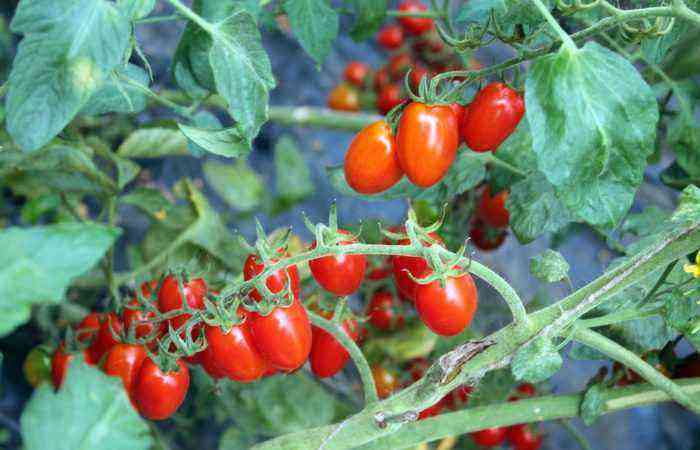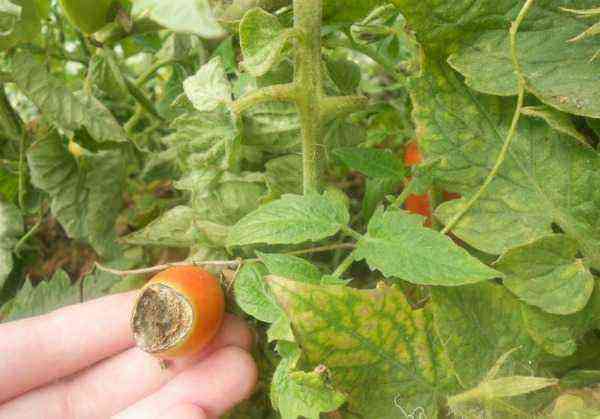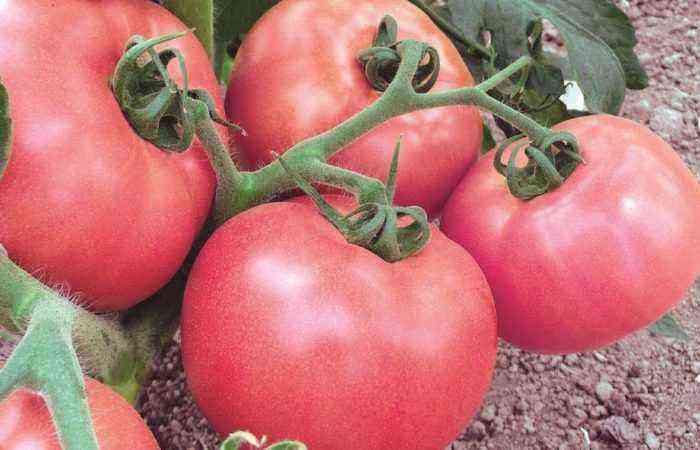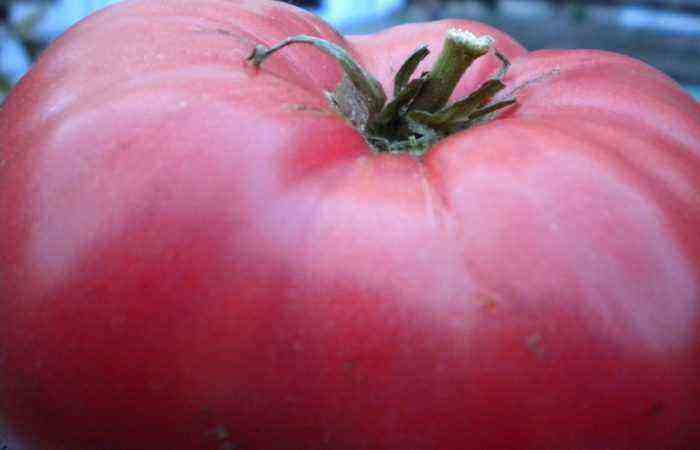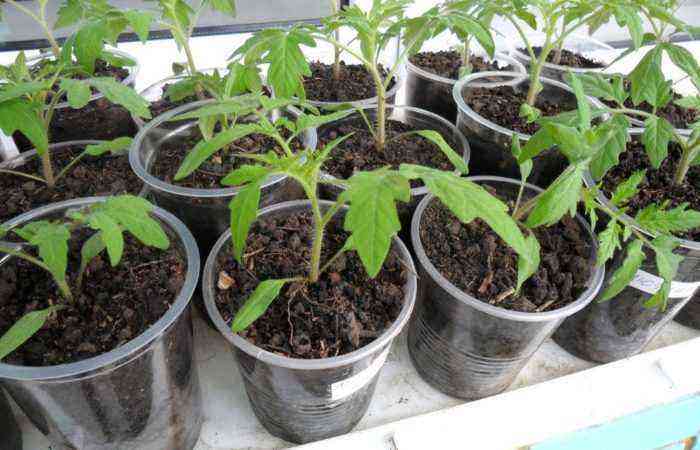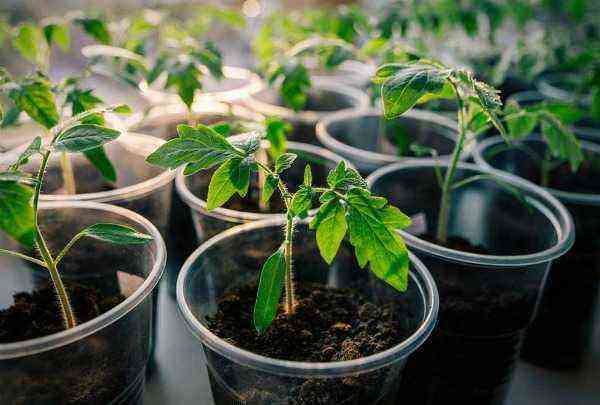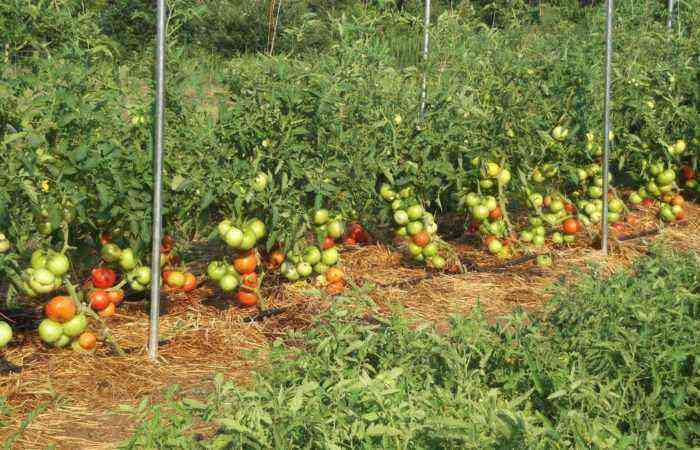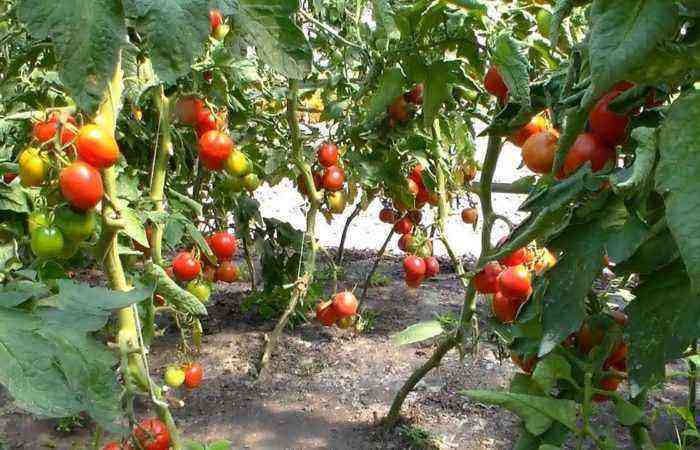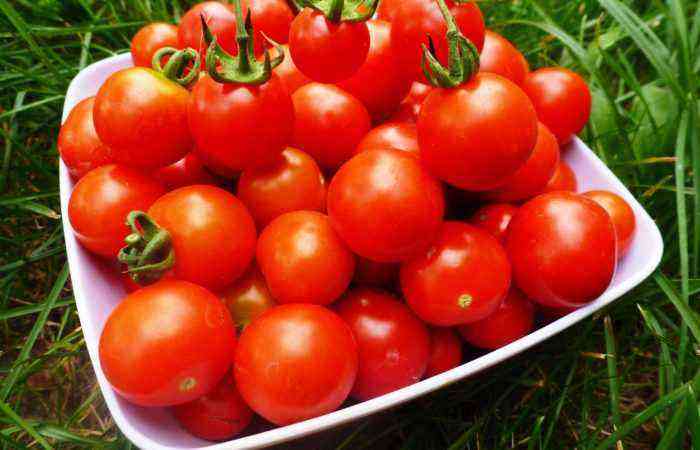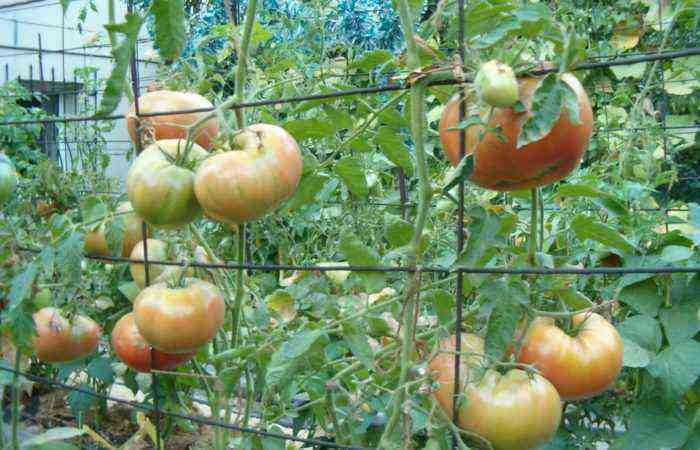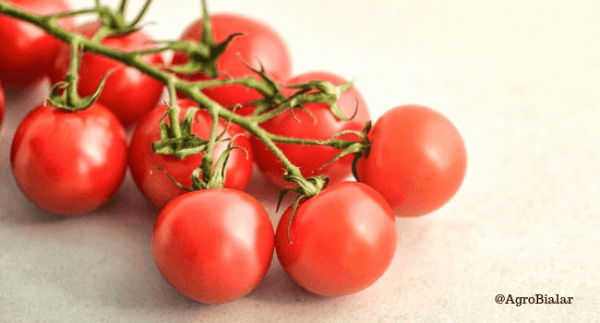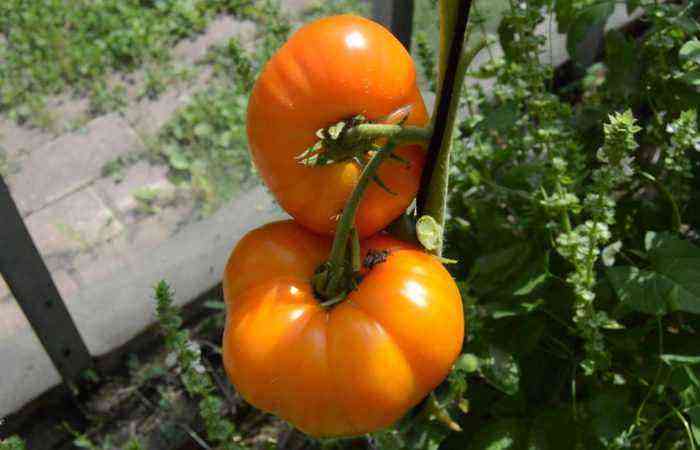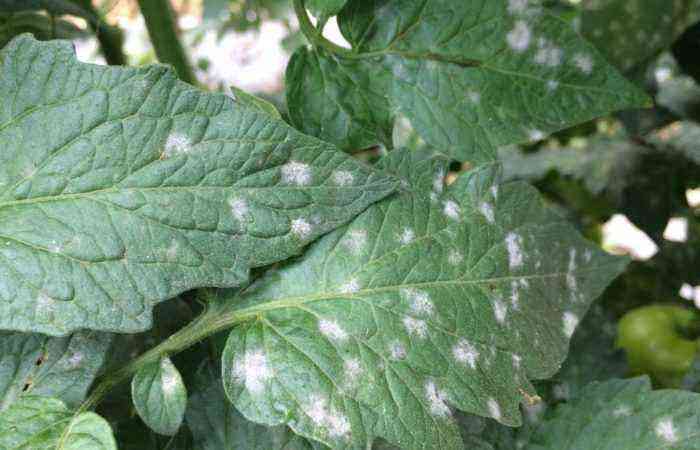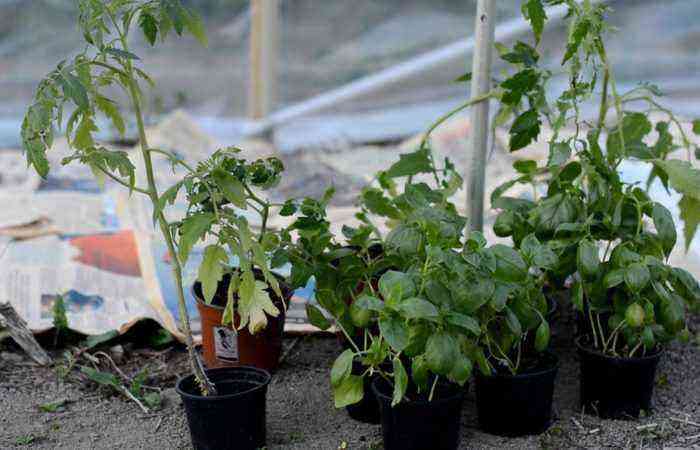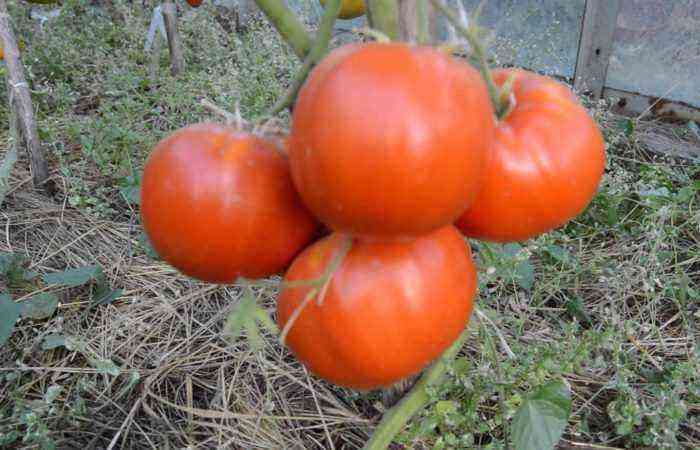Each owner of a summer cottage, engaged in the cultivation of certain garden crops, sooner or later encounters a plant disease. Some ailments are easy to overcome with the right preparations, but others are much more difficult to overcome. Phytophthora belongs to the second category, it is also called late blight.
This disease is dangerous for various varieties of garden cults, ranging from strawberries to eggplants, but most often the disease affects tomatoes. About what to do when late blight is found on your site and will be discussed in the article further.
Phytophthora – what is it
The reason for the appearance of phytophthora lies in the fungus Phytophthora infestans, which can be translated as “vegetation destroyer”. Active reproduction begins with a high humidity and cool temperature (+10 – +20 ° C). If the weather conditions are favorable for the fungus, then you can notice the first symptoms 3 to 4 days after infection, and the development of the disease occurs very quickly.
It is important to notice the problem in a timely manner and begin to solve it, otherwise late blight will affect all the plants in the greenhouse, and there will be no talk of any crop.
I will safely survive the winter of fungal spores, which means that infection will occur next season. Spores survive the cold period in the soil, potato tubers, and in the tops of plants.
The disease also has another name “brown tomato rot”, and it appeared because of the dark brown spots covering the stems and leaves of plants. At the next stage, a whitish coating appears – spores of the fungus.
Harvest, firm initially, also covered with brown spots, and then softening of the fruit follows. Even if the tomatoes were harvested while they were green and had no visible damage, then during ripening, spots may begin to form (when infected). The case ends with the death of the plant.
Reasons for the development of late blight in tomatoes
Before you begin to disassemble the ways to deal with a fungal disease, it is worth dwelling on the causes of the disease. Among the main ones are the following:
- planting tomatoes and potatoes in the immediate vicinity (diseases most often begin with the last plant);
- excessive planting density, no ventilation between plants;
- with excessive accumulation of nitrogen in tomatoes, late blight can also occur (an excess of top dressing);
- improper watering of the crop, too much moisture. Basal watering is recommended, they are organized in such a way that water does not fall on the stem and foliage.
The main signs of tomato disease
Late blight is a fungal disease that most often affects potatoes and tomatoes, peppers and eggplants are less susceptible to it.
The main symptoms of the disease include the following manifestations:
- irregularly shaped brown spots appear on the stem;
- inflorescences become yellow or dark in color and quickly crumble;
- the leaves become covered with dark spots, then dry and begin to fall off;
- brown-gray or black spots appear on the fruits.
The disease itself begins to develop in conditions of high humidity, as soon as a suitable environment for the fungus is created, it will begin to damage the leaves from the bottom. The leaf is covered with a white coating, it gradually passes to the other side of the leaf and already looks like brown spots.
After the leaves become spotty, the defeat of the inflorescences begins, they dry out and fall off, then the turn of the fruits comes. Spots having a brown-gray color, almost black, they cover the entire tomato.
With late blight, the skin thins and the pulp rots, and an unpleasant odor appears. After a few days, late blight will spread throughout the greenhouse, and if you do not start taking action, then the entire crop will most likely be lost.
When to spray tomatoes in a greenhouse
Very often, chemicals are used for preventive measures or to combat late blight, and if they are used correctly, they will not pose any threat to the health and life of people.
The drugs are used every 14 days. The start date for processing is determined by the well-being of the tomatoes, as soon as the shrubs acquire the first ovaries, you can begin to use the funds. However, if the weather outside is rainy and cold, then it is worth starting processing at an earlier date.
How to process tomatoes from phytophthora
There are several ways to protect the crop from a fungal disease. Some summer residents use chemical preparations, others prefer biological ones, others use folk methods. All these tools have their advantages and disadvantages, and everyone decides what to use.
Chemical methods
You can get acquainted with the most popular products produced by the chemical industry in the following table.
Chemical preparations for the fight against phytophthora
Name Description How to use Hom The active substance is copper oxychloride, it has a superficial effect without penetrating the leaves and the fruit. The tool is prophylactic, serves to protect, but for the treatment of diseased shrubs. It does not accumulate, which means that the fungus does not develop addiction to the drug and it can be used with maximum effect every time
Treatment with the agent is carried out about 5 times a season. The duration of action is 14 days, but the drug is easily washed off with water. The last treatment can be carried out at least 20 days before the expected harvest date.
To prepare the solution, you need to mix 40 grams of the drug with water in an amount of 10 liters. The solution is not subject to storage. It is best to use it in the morning or evening hours. During operation, it is recommended to use protective clothing and observe safety precautions.
Furacilin It is an antibacterial agent for humans, but is widely used in crop production, to combat late blight. The bactericidal features of furacilin are such that the solution can be prepared for the whole season, for this, tablets (10 pieces) are diluted in water – 10 liters. Spraying is carried out three times a season: before flowering, when the ovaries appear, at the time of the ripening of the first tomatoes. No danger to humans Trichopolum (metronidazole) It is also an antimicrobial and antifungal agent that people use. Gardeners have recently discovered the means to prepare a solution in a liter of water. The treatment is carried out every 10 days, the agent is washed off with water. Ordan Consists of copper oxychloride and cymoxanil. The agent penetrates the plant and is able to remain on the surface of the tomatoes in a small amount. It has a therapeutic effect for 2-4 days. As a prophylactic up to 14 days. To prepare the solution, you need to take 25 grams of the product for 5 liters of water. Ripe tomatoes should not be eaten for 5 days after processing.
Biological preparations
Such funds are interesting in that their impact is much more useful during the growing season. If you carry out regular treatment with one of the means, then you can prevent the spread of late blight in the greenhouse. Preventive spraying is carried out at intervals of 14 days. If the disease has an initial stage, then the gap should be reduced to 5 days.
The most requested tools are the following:
- phytosporin;
- alirin – B;
- gamair.
Phytosporin. It can be of three types (powder, water-soluble liquid, thick paste). The tool is suitable for both treatment and preventive treatments. Phytosporin treatment is carried out on both sides of the leaf. The shrub must be properly shed on each side.
Some gardeners add the product to the soil before planting seedlings. During the season, you can carry out two treatments. The first time with the beginning of the growing season, the second time the tomatoes are processed after 14 days.
Alirin-B. Released in the form of tablets or powder. This tool reduces the toxicity of the soil. Alirin is used for spraying or a working solution is applied by the root method.
Gamair. It is a tool with a wide range of uses. It can be used for both garden plants and home plants. If the drug is used for prevention, then its rate should be halved. Gamair is used without fear when adding stimulants or insecticides. After preparing the working solution, it must be used on the same day, it can not be stored.
Folk methods
Some gardeners prefer to use only folk remedies, instead of chemical ones, when they cultivate their land. The most popular methods of dealing with late blight can be found in the following table.
Folk remedies against phytophthora
Name Description How to use Whey Phytophthora kefir does not withstand the presence of lactic acid bacteria. Both agents can be used for both prevention and treatment. Serum has the best effect
To prepare a solution with serum, the ratio is 1:1 or 1:2 (diluted with water)
Kefir is diluted in a ratio of 1:10 (1 liter of kefir, 10 water). Both solutions are infused for several hours, then it can be used. There are no restrictions on the number of sprays
Soda Every owner will definitely find this product in the kitchen. For 5 liters of water, 1 tablespoon of powder and liquid soap are added in a small amount (so that the product sticks to the plant). Suitable for weekly treatments Salt A well-known seasoning used to combat late blight. After spraying, the leaves receive a protective layer through which the fungus cannot penetrate the plant. it only works well on the surface. Salt, in the amount of 250 grams, is dissolved in 10 liters of water. Shrubs are sprayed whole. Vinegar Another well-known kitchen remedy can be used against late blight Table vinegar 9% (1/2 cup) is diluted in 10 liters of water, after which tomatoes are sprayed. It is recommended to alternate vinegar with other products. Toothpaste This substance contains a large number of components that have a bactericidal effect. Toothpaste in the amount of one tube is diluted in 10 liters of water. Best of all, first mix the paste with a small amount of liquid, and then mix what happened with the rest of the water. Such a remedy is more used as a prophylactic. Garlic tincture Garlic has a strong smell and good bactericidal properties. For prevention, garlic can be planted near tomatoes. Chopped arrows and heads of garlic in the amount of 1,5 cups are poured with water (10 liters) and left for 24 hours. The product is used for spraying with an interval of 14 days
preventive measures
To reduce the appearance of late blight on the site, it is advisable to use the prevention of this disease:
- Correct landing. Tomatoes are not planted in the place where potatoes, peppers, eggplants used to grow, and these crops should not be nearby. An ideal place for tomato beds where cucumbers, beets, onions, etc. used to grow. Every year, tomatoes are best planted in a new place.
- It is recommended to dilute the soil with a high lime content with peat (it is added to the planting hole), and after planting, small amounts of sand are poured next to the bushes.
- Tomatoes should be planted in compliance with the distance between the bushes and prevent thickening of plantings.
- Watering should be basal, water should not fall on foliage and tomatoes. It is important not to forget about loosening the soil layer next to the shrubs.
- Conducting mulching.
- It is recommended to plant white mustard, calendula, marigolds, garlic and onions near tomatoes.
- Timely pinching and cutting off unnecessary leaves.
- The introduction of potassium and phosphorus supplements, spraying with immunostimulating substances to increase the immune system of the plant.
- Regular ventilation of the greenhouse.
- The introduction of nitrogen fertilizers in the first half of the growing season, then an excess of nitrogen can provoke the appearance of late blight.
Compliance with such simple rules will avoid infection of tomatoes with a dangerous disease. Every gardener should remember that any ailment is easier to prevent than to treat it later.
Useful tips for the gardener
The following recommendations will minimize the possibility of developing late blight on the site.
- Proper nutrition of tomatoes
Nutrient mixtures with a high content of potassium increase the immune system of tomatoes, and therefore improve resistance to disease. The greatest effect of foliar top dressing of seedlings is spraying.
Tomatoes need the right soil. It is important to prevent planting density, timely weeding and pinching shrubs.
- The use of products containing copper
One of the means of prevention is spraying tomatoes at the seedling stage with copper sulphate – 0,02%. After the bushes are planted in a permanent place and ovaries appear on three tassels, the leafy part of the plant is treated with a Bordeaux mixture.
- Selection of specialized varieties
To date, there are a large number of different varietal and hybrid types of tomatoes that have good resistance to late blight. It is recommended to focus on such tomatoes. You can also choose those varieties that have an early fruit ripening period.
Council. When using seed material harvested on the farm, it is best to use those seeds that have already lain for 3 years. Such seeds cease to be carriers of the fungus or virus.
Phytophthora on tomatoes. How to deal with late blight – video
Tillage in a greenhouse from phytophthora in spring – video
As a conclusion, we can say the following: the use of timely preventive measures to prevent late blight allows you to save the gardener’s strength and get a good harvest. Plantings can be protected subject to all technologies for growing tomatoes in greenhouses. If the disease nevertheless manifested itself, then the salvation of the fetus is in the hands of man.


